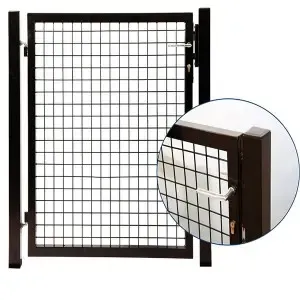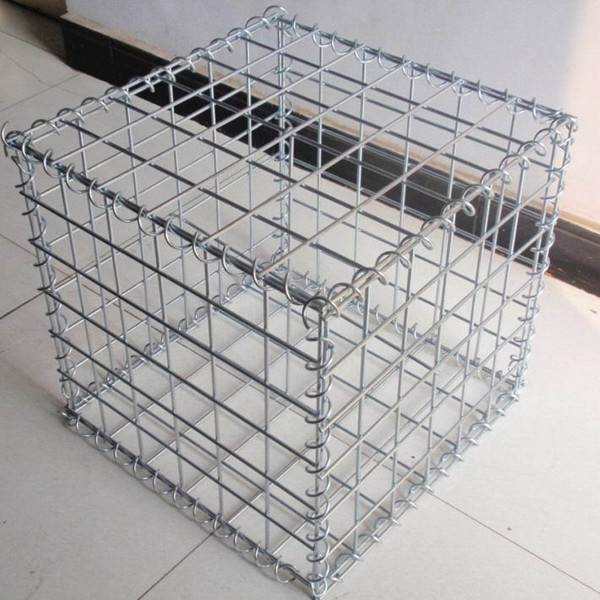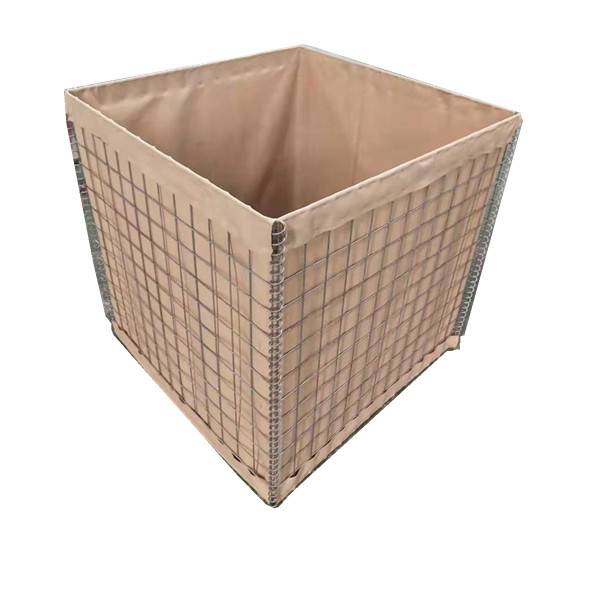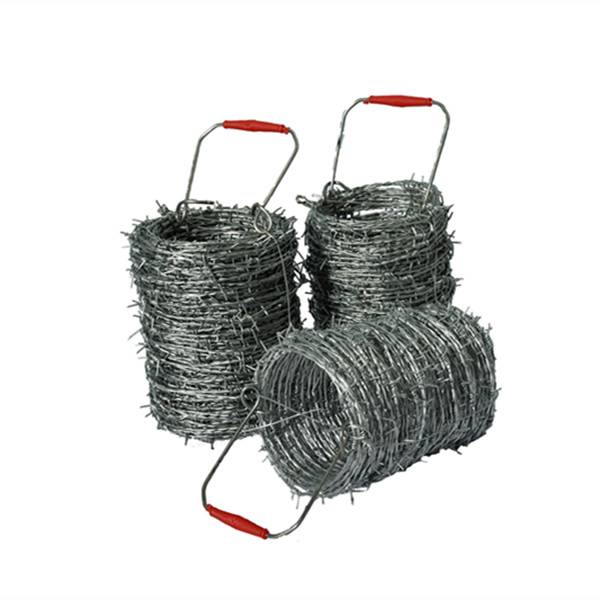
Sep . 22, 2025 12:05 Back to list
Premium Galvanized Iron Wire: Durable & Rust-Resistant Solutions
Understanding galvanized iron wire: A B2B Perspective
In industrial and infrastructural applications, the selection of materials with superior durability and corrosion resistance is paramount. Galvanized iron wire stands as a critical component, widely utilized across diverse sectors due to its enhanced mechanical properties and protective zinc coating. This comprehensive overview delves into its manufacturing intricacies, technical specifications, strategic applications, and competitive advantages, providing B2B decision-makers with the insights necessary for informed procurement and project planning.
The demand for robust and long-lasting materials drives continuous innovation in wire manufacturing. As a foundational element for everything from fencing and construction to telecommunications and agriculture, understanding the nuances of galvanized iron wire is essential for optimizing project longevity and cost-effectiveness. We will explore how different galvanization processes impact performance and suitability for various demanding environments.
Detailed Manufacturing Process Flow of Galvanized Iron Wire
The production of galvanized iron wire is a sophisticated multi-stage process designed to imbue ordinary iron wire with superior corrosion resistance through a protective zinc layer. This process typically begins with high-quality low-carbon steel wire rods, chosen for their ductility and strength. Key materials often include Q195 or Q235 grade steel, known for their excellent cold workability. The manufacturing pathway can be generalized as follows:
- Wire Rod Selection & Pre-treatment: High-carbon or low-carbon steel wire rods are selected based on the desired final properties. The rods undergo mechanical descaling to remove surface impurities, followed by acid pickling (e.g., in hydrochloric acid) to chemically clean the surface and remove rust and scale. This ensures optimal adhesion of subsequent coatings. Rinsing and phosphating may follow to prepare the surface further.
- Wire Drawing: The cleaned wire rods are drawn through a series of dies, progressively reducing their diameter to the desired gauge. This cold-working process increases the tensile strength of the wire. Modern facilities often use multi-pass drawing machines for efficiency and precision.
- Annealing (Optional but Common): For applications requiring higher ductility and flexibility, the drawn wire may be annealed. This heat treatment process, performed at elevated temperatures, softens the wire by recrystallizing its microstructure, making it easier to bend and manipulate without fracturing.
- Surface Cleaning for Galvanization: Before galvanizing, the wire undergoes a rigorous cleaning process, including alkaline degreasing to remove oils and residues, followed by further acid pickling and multiple rinses. A fluxing agent, often a zinc ammonium chloride solution, is then applied to prepare the surface for metallurgical bonding with molten zinc.
-
Galvanization Process:
- Hot-Dipped Galvanizing: The most common method. Wire is continuously immersed in a bath of molten zinc (typically at 450-460°C). A metallurgical bond forms between the iron and zinc, creating a durable, multi-layered zinc-iron alloy coating followed by a pure zinc outer layer. This process yields thick, robust coatings, ideal for harsh environments.
- Electro Galvanizing (Electro-Zinc Plating): Wire passes through an electrolyte containing zinc salts. Zinc ions are deposited onto the wire surface using an electric current. This method produces a thinner, more uniform, and aesthetically pleasing coating, often preferred for applications where a smooth finish and controlled thickness are critical. It falls under the category of electro galvanized iron wire.
- Wiping & Cooling: After galvanization, excess zinc is removed using wiping dies to achieve the desired coating thickness and uniformity. The wire is then cooled, either by air or water, before coiling.
- Inspection & Coiling: The finished galvanized wire undergoes stringent quality checks for zinc coating mass (g/m²), adhesion, tensile strength, elongation, and surface finish. Common testing standards include ASTM A641, ISO 7989, and ANSI/AWWA C104/A21.4 for specific applications. The wire is then coiled onto spools or in bundles, ready for shipment. Service life for hot-dipped variants can exceed 20 years in typical atmospheric conditions, demonstrating significant corrosion resistance.
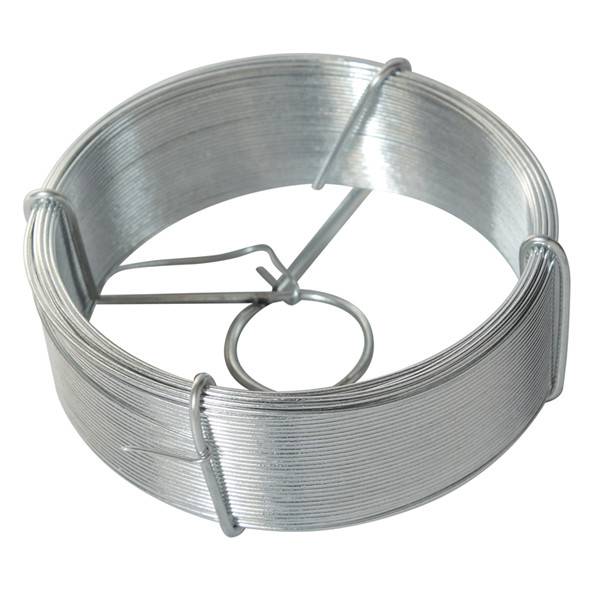
Target industries for these advanced wires include petrochemical for structural supports, metallurgy for process equipment components, and water supply & drainage for pipe reinforcement and fencing. The primary advantage in these scenarios is enhanced corrosion resistance, which significantly reduces maintenance costs and extends operational lifespans, contributing to energy saving by minimizing replacement needs.
Current Industry Trends and Market Dynamics
The market for galvanized iron wire is evolving, driven by global infrastructure development, increasing demand for durable construction materials, and a heightened focus on sustainability. Emerging trends include the development of specialized coatings (e.g., zinc-aluminum alloys) for even greater corrosion protection, and the integration of smart manufacturing processes to enhance production efficiency and quality control. The shift towards higher strength-to-weight ratio materials and longer service life products is particularly prominent in sectors such as agriculture, where galvanized iron wire mesh and galvanized iron wire netting are critical for fencing and animal enclosures, requiring minimal maintenance.
Additionally, environmental regulations are influencing manufacturing practices, pushing for more eco-friendly galvanization techniques and responsible disposal of by-products. The competitive landscape for galvanized iron wire price is also dynamic, influenced by raw material costs (zinc and steel), energy prices, and international trade policies. Buyers are increasingly seeking suppliers who can demonstrate not only competitive pricing but also consistent quality and adherence to global standards.
Technical Specifications and Parameters
The performance of galvanized iron wire is defined by several critical technical parameters. These specifications determine its suitability for specific applications and its expected lifespan in various environmental conditions. Understanding these values is crucial for engineering and procurement teams.
Typical Product Specifications for Hot-Dipped Galvanized Iron Wire
| Parameter | Unit | Value Range | Standard (e.g.) |
|---|---|---|---|
| Wire Diameter | mm (BWG) | 0.15 - 5.0 (36 BWG - 6 BWG) | ASTM B6 / EN 10016 |
| Tensile Strength | MPa | 350 - 550 | ASTM A641 / ISO 7989 |
| Zinc Coating Mass (Heavy Coat) | g/m² | 100 - 300 (Class A) | ASTM A641 / EN 10244-2 |
| Zinc Coating Mass (Light Coat) | g/m² | 15 - 80 (Electro Galvanized) | ASTM A641 / EN 10244-1 |
| Elongation | % | ≥ 10 (Soft) to ≥ 5 (Hard) | ASTM A641 / ISO 7989 |
| Packaging Weight | kg/roll | 25 - 1000 | Customer Specific |
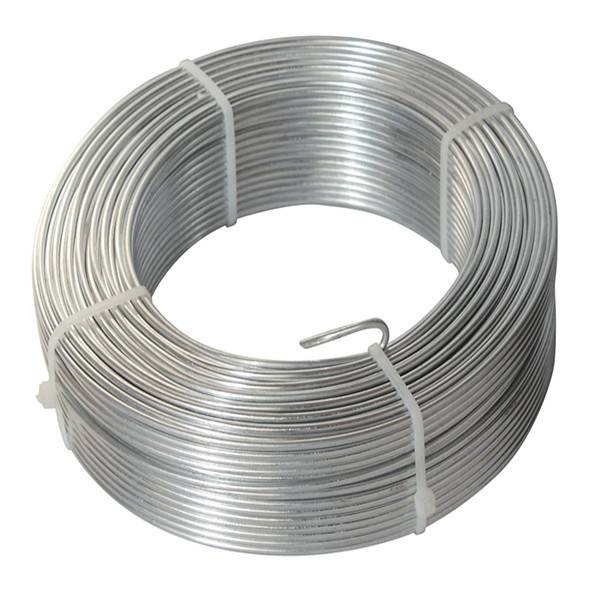
These parameters are meticulously controlled to meet various international standards like ISO (International Organization for Standardization) and ASTM (American Society for Testing and Materials), ensuring consistent quality and performance. The zinc coating provides a sacrificial protective barrier, preventing the underlying iron from corroding even if scratched, a key advantage over ungalvanized wire.
Diverse Application Scenarios
The versatility of galvanized iron wire extends to an impressive array of industrial and commercial applications, driven by its superior durability and resistance to environmental degradation.
- Construction Industry: Widely used for binding rebar, mesh reinforcement, and as tie wire in concrete structures. Its corrosion resistance is critical for the long-term integrity of buildings and infrastructure, especially in humid or coastal areas.
- Agricultural Sector: Essential for vineyard trellising, hop farming, livestock fencing, and general farm utility. The longevity of galvanized iron wire netting and barbed wire minimizes replacement frequency, offering significant economic benefits.
- Fencing and Security: Forming the backbone of security fencing, chain-link fences, and welded wire mesh panels for industrial facilities, public spaces, and residential boundaries. Hot dipped galvanized iron wire is preferred here for maximum lifespan.
- Telecommunications and Utilities: Used for stay wires, messenger wires, and ground wires, providing structural support and protection against environmental factors for electrical and communication lines.
- Industrial Manufacturing: Employed in spring manufacturing, fasteners, material handling (e.g., baling wire), and filter mesh. The consistency in diameter and strength is crucial for automated production processes.
- Crafts and Artistic Applications: Due to its workability and aesthetic finish, electro galvanized iron wire also finds niche uses in creative industries.
The enhanced service life and minimal maintenance requirements translate directly into lower operational expenditures and greater reliability across these sectors, making galvanized iron wire a preferred material choice.
Technical Advantages and Performance Metrics
The inherent technical advantages of galvanized iron wire are what solidify its position as a high-performance material in demanding environments.
- Superior Corrosion Resistance: The primary benefit. The zinc coating acts as a barrier, preventing oxygen and moisture from reaching the iron. Furthermore, zinc is anodic to iron, meaning it sacrificially corrodes first, protecting the underlying steel even if the coating is scratched or damaged. This protection is far more robust than paint or other thin coatings. Hot-dipped variants provide significantly thicker coatings than electro galvanized iron wire, offering extended protection in aggressive environments.
- Extended Service Life: Due to its corrosion resistance, galvanized wire boasts a significantly longer lifespan compared to plain steel wire. This reduces the frequency of replacement and associated labor costs, especially for permanent installations like infrastructure projects.
- High Strength and Durability: The underlying steel wire provides excellent tensile strength and load-bearing capabilities, while the galvanization process does not compromise these mechanical properties. The combination ensures a robust product suitable for structural and high-stress applications.
- Cost-Effectiveness: While the initial galvanized iron wire price might be higher than ungalvanized wire, its extended lifespan and minimal maintenance requirements lead to a lower total cost of ownership over the product's life cycle. This long-term value proposition makes it economically superior for most industrial applications.
- Versatility: Available in various gauges, tensile strengths, and coating thicknesses, allowing for precise selection based on specific project requirements, from fine binding wire to heavy-duty structural components.
These advantages are validated through rigorous testing, including salt spray tests (ASTM B117) and adherence tests, ensuring the coating's integrity and long-term performance.
Hot-Dipped vs. Electro Galvanized Wire: A Comparison
The choice between hot-dipped and electro galvanized iron wire is a critical decision, influencing both performance and cost. Each process offers distinct advantages tailored to specific application demands.
Comparison Table: Galvanization Methods
| Feature | Hot-Dipped Galvanized Iron Wire | Electro Galvanized Iron Wire |
|---|---|---|
| Coating Thickness | Thicker (60-300 g/m²) | Thinner (15-80 g/m²) |
| Corrosion Resistance | Superior (15-20+ years) | Good (3-5 years) |
| Adhesion to Base Metal | Metallurgical bond (strong) | Electro-chemical bond (good) |
| Surface Finish | Rougher, matte grey, visible spangles | Smoother, brighter, uniform sheen |
| Flexibility/Workability | Slightly less flexible due to thicker coating | More flexible, better for intricate bending |
| Cost (Relative) | Higher initial cost | Lower initial cost |
| Typical Applications | Outdoor fencing, structural, aggressive environments | Indoor applications, rebar tying, crafts, welding mesh |
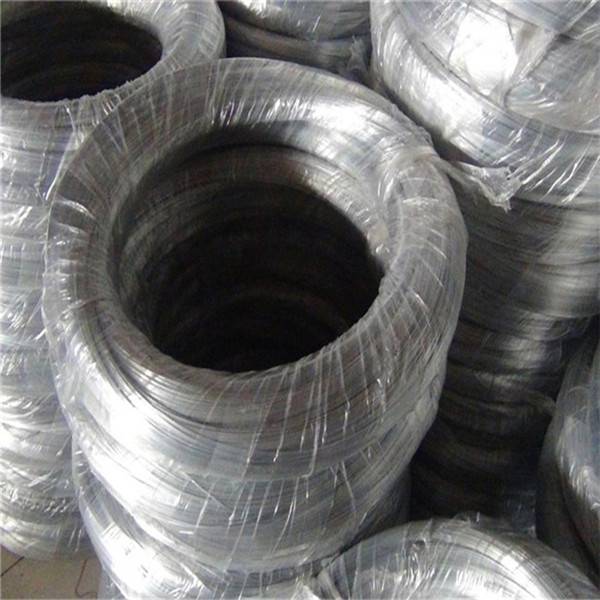
Choosing the appropriate galvanization method ensures optimal performance and cost-efficiency for a given project, reinforcing the importance of detailed specification analysis.
Vendor Comparison and Selection Criteria
Selecting the right supplier for galvanized iron wire is crucial for project success. While specific vendor names are outside the scope, key differentiators to consider when evaluating partners include:
- Quality Certifications: Prioritize suppliers with ISO 9001 certification for quality management systems and products compliant with international standards like ASTM A641, EN 10244, or relevant national codes.
- Manufacturing Capabilities: Assess production capacity, technological sophistication (e.g., modern drawing lines, automated galvanizing plants), and ability to produce a wide range of wire gauges and coating types.
- Experience and Track Record: Look for vendors with a proven history in the industry, evidenced by years of service and successful large-scale project participation. References from other B2B clients can be invaluable.
- Customization Services: The ability to provide customized solutions, including specific wire diameters, tensile strengths, zinc coating weights, and packaging formats, is a significant advantage.
- Logistics and Supply Chain Reliability: Efficient order fulfillment, global shipping capabilities, and robust inventory management are vital for timely project execution.
- Technical Support and After-Sales Service: Access to expert technical assistance, clear warranty policies, and responsive customer support are indicators of a reliable long-term partner.
A thorough vendor evaluation process ensures that the chosen supplier can consistently meet stringent quality, delivery, and service expectations for galvanized iron wire.
Customized Solutions for Specific Needs
Recognizing that every industrial project has unique requirements, leading manufacturers offer highly customized solutions for galvanized iron wire. This adaptability is crucial for optimizing performance and cost-efficiency in specialized applications.
- Wire Diameter and Gauge: Tailoring wire diameters to precise specifications (e.g., from fine 36 BWG to heavy 6 BWG) for applications ranging from delicate mesh to heavy-duty structural components.
- Tensile Strength Adjustment: Customizing the wire's hardness or softness through annealing processes to meet specific ductility requirements, ensuring it is pliable enough for bending or robust enough for high-tension applications.
- Zinc Coating Thickness: Offering varying levels of zinc coating mass (e.g., Class A, B, or C according to ASTM A641) to match the expected environmental corrosivity and desired service life. This includes both standard hot dipped and electro galvanized iron wire options.
- Special Coatings: Development of enhanced coatings, such as Zn-Al (zinc-aluminum) alloys, for superior corrosion resistance in extremely aggressive environments.
- Packaging Solutions: Providing customized spool sizes, coil weights (from 25 kg to 1000 kg), and packaging materials (e.g., plastic film, burlap cloth, pallets) to suit client logistics and machinery.
- Specific Standards Compliance: Manufacturing wire to comply with highly specific industry or national standards beyond common ASTM or ISO, catering to niche market demands.
Engaging with manufacturers capable of delivering these bespoke solutions ensures that clients receive precisely engineered galvanized iron wire products that integrate seamlessly into their operations and deliver optimal performance.
Application Case Studies
Real-world applications demonstrate the practical advantages of using galvanized iron wire.
Case Study 1: Large-Scale Agricultural Fencing Project
A major agricultural enterprise in a humid, coastal region faced recurring costs associated with replacing standard steel wire fencing that corroded within 3-5 years. By transitioning to Class A hot-dipped galvanized iron wire for its perimeter fencing, the projected service life increased to over 20 years. This strategic shift significantly reduced maintenance labor and material replacement costs by an estimated 75% over a 15-year period, demonstrating a substantial return on investment (ROI) despite a slightly higher initial galvanized iron wire price. The enhanced corrosion resistance ensured the integrity of the containment, vital for livestock security and crop protection.
Case Study 2: Infrastructure Reinforcement in Urban Development
For a large urban bridge construction project, engineers required high-tensile galvanized iron wire for concrete reinforcement and binding rebar. The wire needed to withstand prolonged exposure to varied atmospheric conditions and ensure structural integrity for several decades. By specifying wire meeting ASTM A641 standards for heavy zinc coating and precise tensile strength, the project minimized the risk of rust bleeding through concrete, preventing aesthetic damage and premature structural weakening. The reliability and consistency of the supplied galvanized iron wire contributed directly to the project's adherence to stringent safety and durability specifications.
Frequently Asked Questions (FAQ)
- Q: What is the primary advantage of galvanized iron wire over plain iron wire?
- A: The primary advantage is superior corrosion resistance. The zinc coating creates a protective barrier and sacrificially protects the iron, significantly extending the wire's lifespan and reducing maintenance needs, especially in outdoor or corrosive environments.
- Q: How does hot-dipped galvanizing differ from electro galvanizing?
- A: Hot-dipped galvanizing involves immersing the wire in molten zinc, creating a thick, durable metallurgical bond suitable for harsh outdoor conditions. Electro galvanizing (electro galvanized iron wire) uses an electrolytic process, resulting in a thinner, smoother, and brighter coating, often preferred for indoor applications or where aesthetics are important, with moderate corrosion resistance.
- Q: What industry standards should I look for when sourcing galvanized iron wire?
- A: Key international standards include ASTM A641 (Standard Specification for Zinc-Coated (Galvanized) Carbon Steel Wire) and ISO 7989 / EN 10244 series (Steel wire and wire products - Non-ferrous metallic coatings on steel wire). Compliance with ISO 9001 for the manufacturer's quality management system is also a strong indicator of reliability.
- Q: Can galvanized iron wire be customized for specific project requirements?
- A: Yes, reputable manufacturers offer extensive customization options, including specific wire diameters, tensile strengths, zinc coating thicknesses (e.g., Class A, B, C), and various packaging formats to meet unique project specifications and logistical needs.
Logistics, Warranty, and Support
Lead Time and Fulfillment
Standard lead times for common specifications of galvanized iron wire typically range from 2 to 4 weeks, depending on order volume and current production schedules. For highly customized orders or large-scale projects, lead times may extend to 6-8 weeks. We maintain strategic stock levels of popular gauges and coating types to facilitate quicker turnaround for urgent requirements. Our advanced logistics network ensures efficient and reliable global shipping, with comprehensive documentation provided for customs clearance.
Warranty Commitments
All our galvanized iron wire products come with a comprehensive warranty against manufacturing defects and non-compliance with agreed-upon specifications and international standards (e.g., ASTM A641, EN 10244). The specific warranty period and terms are provided with each quotation, reflecting our confidence in product quality and adherence to strict quality control measures.
Customer Support and After-Sales Service
Our commitment extends beyond product delivery. We provide dedicated technical support, assisting clients with product selection, application guidance, and troubleshooting. Our after-sales service team is available to address any inquiries or concerns promptly, ensuring seamless integration of our galvanized iron wire into your projects and maximizing operational uptime.
Conclusion
Galvanized iron wire is an indispensable material for a vast spectrum of industrial and infrastructural applications, offering an optimal balance of strength, durability, and paramount corrosion resistance. Its manufacturing precision, adherence to stringent international standards, and capacity for customization make it a cornerstone for projects demanding reliability and longevity. By understanding the detailed technical specifications, application advantages, and the distinctions between galvanization methods, B2B stakeholders can make informed decisions that ensure project success and maximize long-term value.
References
- ASTM International. (2020). ASTM A641/A641M - 20, Standard Specification for Zinc–Coated (Galvanized) Carbon Steel Wire. ASTM Committee A05 on Metallic Coated Iron and Steel Products.
- ISO Standards. (2018). ISO 7989-1:2018, Steel wire and wire products - Non-ferrous metallic coatings on steel wire - Part 1: General principles. International Organization for Standardization.
- Galvanizers Association. (n.d.). The Galvanizing Process. Retrieved from galvanizing.org.uk/the-galvanizing-process/
- European Committee for Standardization. (2012). EN 10244-2:2012, Steel wire and wire products - Non-ferrous metallic coatings on steel wire - Part 2: Zinc or zinc alloy coatings. CEN.
-
Custom Welded Wire Mesh: Durable, Versatile, and Sustainable Solutions for Global Applications
NewsNov.24,2025
-
Custom Weld Mesh – Tailored Solutions for Durable Industrial Fencing & Construction
NewsNov.24,2025
-
Comprehensive Guide to Chicken Welded Wire Mesh: Uses, Benefits & Suppliers
NewsNov.23,2025
-
BRC Weld Mesh – Durable Reinforcement Solutions for Modern Construction
NewsNov.23,2025
-
Durable BRC 3315 Mesh for Reliable Concrete Reinforcement | Hardware In Store
NewsNov.23,2025
-
Discover the Benefits of Green Weld Mesh – Durable, Sustainable Fencing Solutions
NewsNov.22,2025
Products categories





